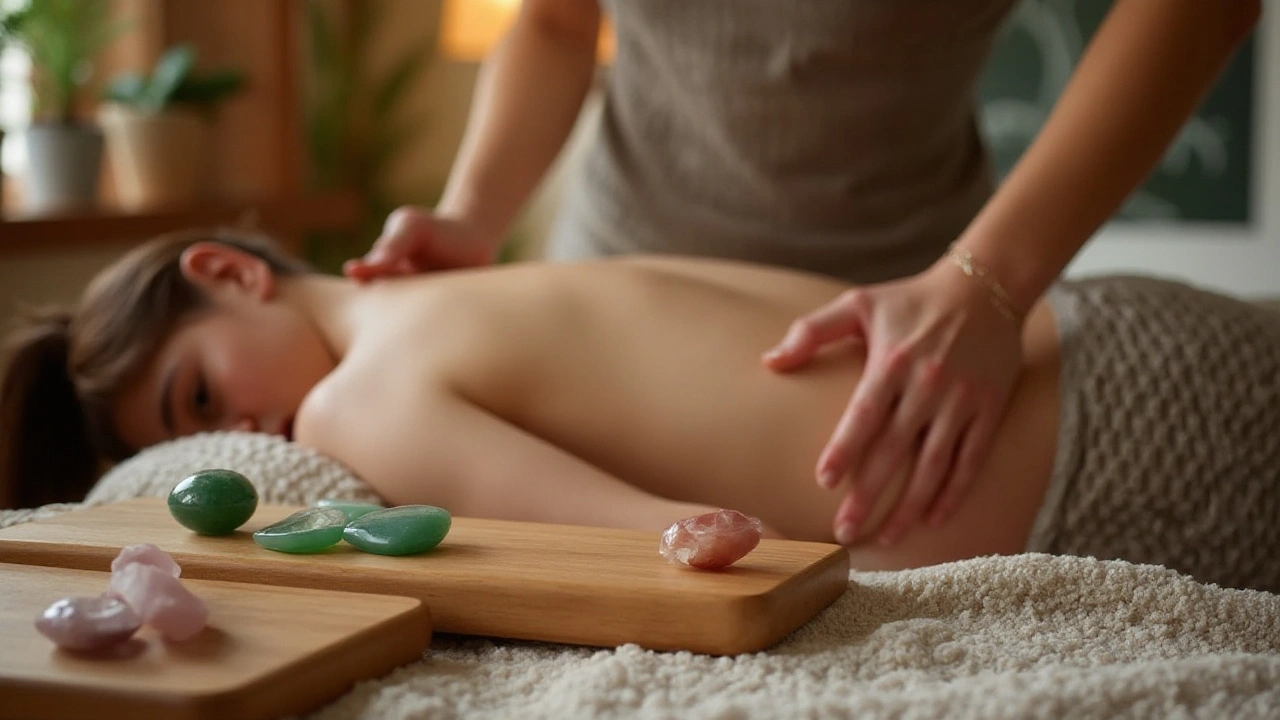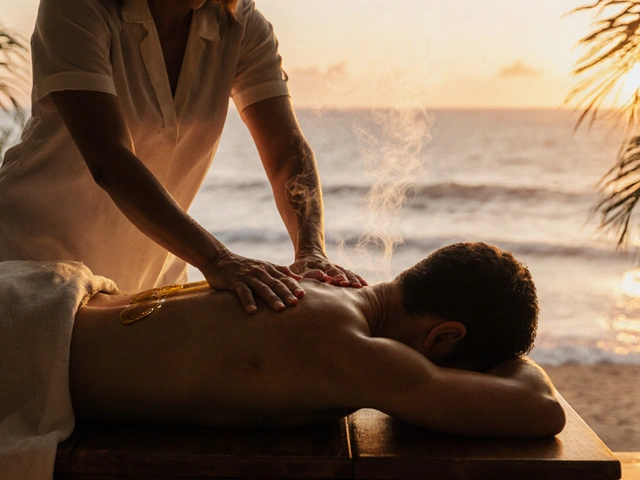Gua Sha: Practical Guide for Better Circulation and Less Tension
Gua Sha is a simple skin-scraping technique that eases tight muscles and boosts local circulation. A smooth tool—often made of jade, bone, or ceramic—is held at an angle and glided across lubricated skin to create a flushing effect. People use it for neck pain, headaches, jaw tension, and to reduce muscle knots after workouts. You'll often see red marks where the tool was used; those are normal and usually fade in a few days.
It works by increasing blood flow and moving stagnant fluid under the skin. That helps the body clear metabolic waste and bring in fresh oxygen and nutrients. Many clients report immediate loosening of tight areas and better range of motion after a short session. Gua Sha also stimulates minor inflammation that can jump-start a healing response when used sensibly.
How to Do Gua Sha Safely at Home
Start with clean hands and a clean tool. Apply a generous amount of oil—grapeseed, jojoba, or coconut—so the tool glides without pulling. Hold the tool flat, about 15 to 30 degrees, and use long strokes in one direction. For the neck and shoulders, work from the base of the skull down toward the collarbone. Keep pressure steady but not painful; aim for a strong, comfortable stroke rather than digging or scrubbing.
Limit each area to a few minutes the first few times. If you see any broken skin, stop immediately and avoid that spot until it heals. Avoid Gua Sha over varicose veins, open wounds, infected skin, bruises, or directly over bone. Pregnant people should check with their healthcare provider before trying it, and anyone on blood thinners needs medical clearance because bruising can be heavier.
When to Book a Pro and Aftercare Tips
If pain is sharp, new, or tied to injury, get a professional opinion before using Gua Sha. A trained therapist can target deeper layers safely and adjust technique for chronic issues. After a session, rest, drink water, and keep the treated area warm for a few hours. Use gentle movement—slow neck rolls or shoulder circles—to prevent stiffness. If marks are dark or don’t fade in a week, contact a clinician.
Gua Sha pairs well with massage, heat, and mobility work. Start slowly: try one session a week and see how your body responds. With simple care and the right pressure, Gua Sha can be a quick, inexpensive way to ease tension and feel more mobile.
Common quick tips: avoid cold tools; if you want heat, warm the tool before use. Keep strokes long and check pressure with a friend or mirror. Track how you feel after each session—more energy, less tension, or sore muscles will tell you if to change frequency. Over time, many people move from weekly sessions to occasional tune-ups based on activity and stress levels. If you have chronic pain, pair Gua Sha with stretching plus strength work for longer-term results. Talk with your therapist about goals and timeline.

Discover the Health Benefits of Gua Sha for a Vibrant Lifestyle
Delve into the ancient therapy of Gua Sha and learn how it can enhance your well-being. This article explores the basics of Gua Sha, its health benefits, interesting facts, and practical tips to incorporate this practice into your wellness routine.
Categories
- Health and Wellness (148)
- Alternative Therapies (86)
- Massage Therapy (40)
- Travel and Culture (15)
- Beauty and Skincare (9)
- Holistic Health (8)
- Health and Fitness (5)
- Spirituality (5)
- Other (2)
- Personal Development (2)
Popular Articles



